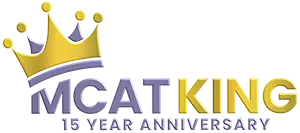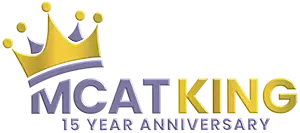Top Combined Medical Programs in the United States

Home • Top Combined Medical Programs in the United States
Combined BS/MD programs are among the most structured and competitive pathways for aspiring physicians in the United States. Unlike the traditional route, which requires four years of undergraduate study followed by a separate medical school application, these programs give high school seniors a conditional seat in medical school from the start of college. This structure removes the uncertainty of the traditional process and allows students to focus on both their undergraduate education and long-term goals in medicine.
By 2025, these programs have become even more competitive, with many admitting fewer than five percent of applicants. Acceptance often requires near-perfect grades, top SAT or ACT scores, and significant clinical or research experience. Simultaneously, the programs vary widely. Some last six or seven years and accelerate the timeline to a medical degree, while others span the full eight years but offer more flexibility in academic exploration. Certain programs waive the MCAT entirely, while others require it at a lower threshold.
This guide provides a comprehensive look at the top BS/MD programs in the United States in 2025. You will learn about their structure, requirements, and what makes each unique, so you can decide whether this path aligns with your goals and strengths.
Brown University – Program in Liberal Medical Education (PLME)
Brown’s PLME remains among the most exclusive BS/MD tracks in the country. It spans eight years and guarantees admission to Warren Alpert Medical School provided students fulfill academic expectations.
Acceptance Rate
For the class of 2027, Brown received 4,192 applications and accepted only 74 students, yielding a rate around 1.77%—significantly lower than undergraduate admissions overall.
Program Structure and Flexibility:
Students complete a full undergraduate degree with complete freedom to explore nearly 100 majors, including humanities. Up to two gap years are permitted.
Testing and Academic Requirements
The program generally expects strong SAT/ACT scores; admitted students often score in the 1510–1560 SAT or 34–35 ACT range. Once admitted, students are exempt from the MCAT if they maintain strong grades and complete pre-med coursework.
University of Rochester – Rochester Early Medical Scholars (REMS)
REMS is one of the most competitive BS/MD programs, offering a streamlined path from undergraduate to medical school in eight years.
Selectivity
Recent reports describe REMS as extremely competitive. One program applicant shared that over 1,700 students applied, but only 50 semifinalists were selected, highlighting the program’s intense competition.
MCAT
No MCAT is required as long as students complete their bachelor's degree and pre-med requirements.
Curriculum and Opportunity
Students pursue undergraduate degrees in any field while completing pre-med requirements, gain early clinical and research experience, and benefit from concentrated advising and enrichment programming.
Case Western Reserve University – Pre-Professional Scholars Program (PPSP)
PPSP offers conditional admission to the School of Medicine for a very select group of undergrads.
Selectivity
Estimated acceptance rate is around 1%, making PPSP one of the most competitive programs of its kind.
Academic Benchmarks
Students must maintain a 3.7 GPA and score at least 511 on the MCAT, with all subsections above 124.
Flexibility
Scholars can choose any major, participate in gap years, and access robust clinical and research environments.
University of Pittsburgh – Guaranteed Admissions Program (GAP)
GAP offers strong assurance for high-achieving applicants, particularly in-state students.
Selectivity
Limited data suggests the acceptance rate is under 5%, particularly strong for Pennsylvania residents.
Requirements
Students must maintain a 3.7 GPA in total and in sciences and achieve a minimum MCAT score of 517.
Program Experience
GAP students can explore any major at Pitt but must also document research and service experience.
Penn State–Jefferson 7-Year Program (PMM)
PMM offers an accelerated path to medicine via a three-year undergrad, four-year med track.
Acceptance
Estimates suggest a 3–4% rate, with about 25 students admitted annually.
Requirements
Students must maintain a 3.5 GPA and achieve a minimum MCAT score of 508.
Structure
Students typically major in pre-med science and complete undergrad in three years before starting medical school.
University of South Florida – 7-Year Accelerated BS/MD
USF’s Honors College offers an intensive three-year undergraduate track leading into medical school.
Selectivity and Standards
Students must maintain a 3.8 GPA in all courses and science subjects.
MCAT & Experience Requirements
Requires an early MCAT score of 516+. Students also must complete 150 hours of shadowing, 150 hours of service, and a research thesis.
Outcome
Students graduate one year early, with robust clinical preparation.
Final Thoughts
Combined BS/MD programs are pathways designed for students who demonstrate exceptional academic strength, maturity, and certainty about their career goals. By 2025, these programs have become even more competitive, often admitting fewer than two or three percent of applicants. Success requires more than grades and test scores; it requires a record of leadership, service, and a clear sense of purpose.
The advantages are undeniable. Securing a conditional seat in medical school reduces the stress of the traditional application cycle and allows students to pursue their undergraduate years with focus. Some programs shorten the overall timeline to a medical degree, while others provide freedom to explore disciplines outside of science without jeopardizing medical school admission.
At the same time, these programs are not for everyone. They demand early commitment and do not leave much room for uncertainty or career exploration. Students who are still discovering their interests may find the traditional path to medical school more flexible and better aligned with their growth.
Ultimately, deciding whether to apply to a BS/MD program should be less about prestige and more about fit. If you are confident in your desire to become a physician, prepared to sustain high performance, and eager for a defined path, these programs can offer clarity and opportunity. For others, the traditional route remains equally valid, providing more time to develop academically and personally before taking on the responsibilities of medical training.
- Brown University – Program in Liberal Medical Education (PLME)
- University of Rochester – Rochester Early Medical Scholars (REMS)
- Case Western Reserve University – Pre-Professional Scholars Program (PPSP)
- University of Pittsburgh – Guaranteed Admissions Program (GAP)
- Penn State–Jefferson 7-Year Program (PMM)
- University of South Florida – 7-Year Accelerated BS/MD
- Final Thoughts




